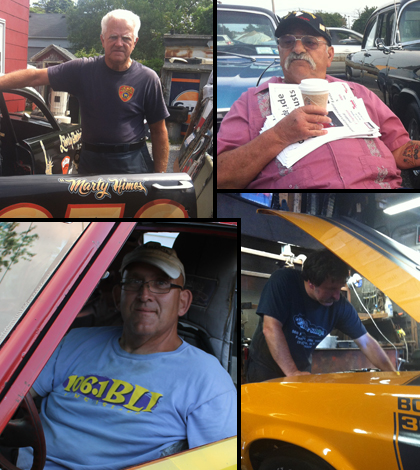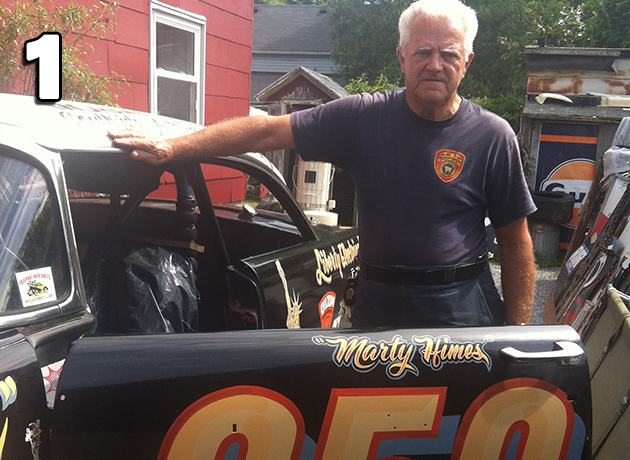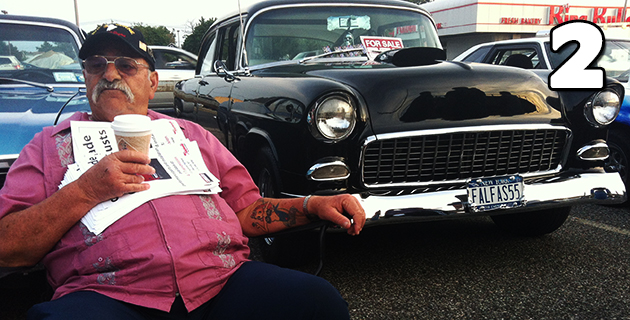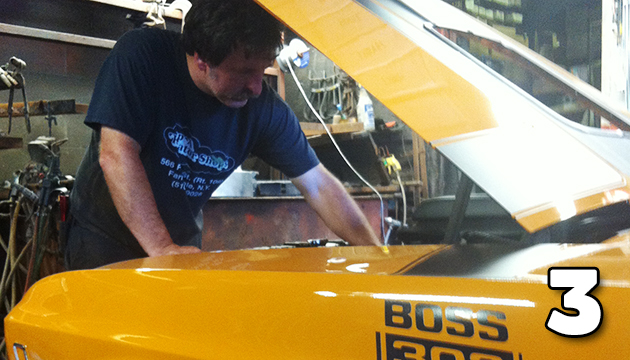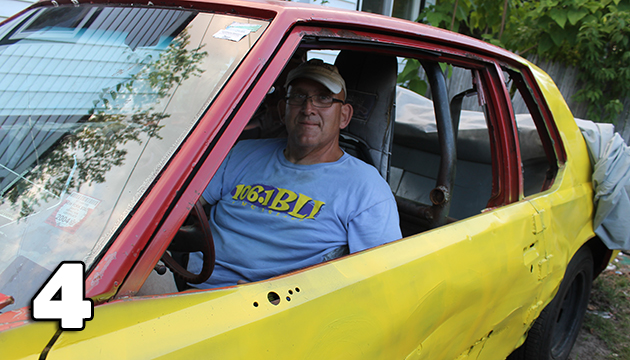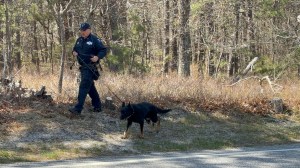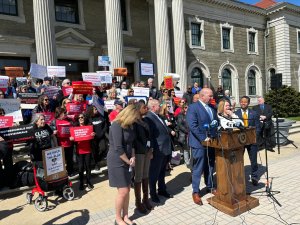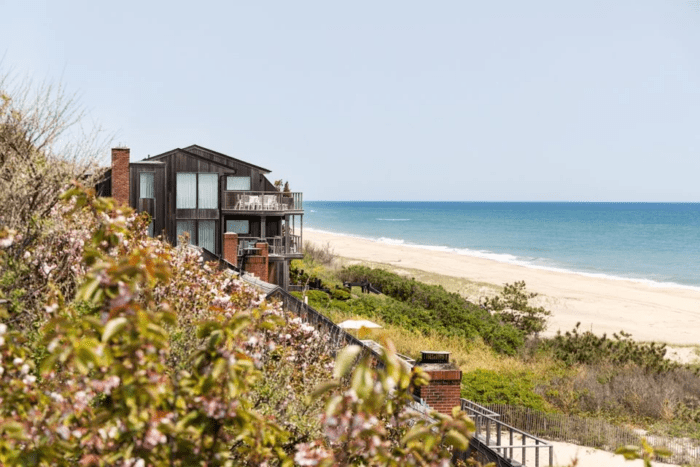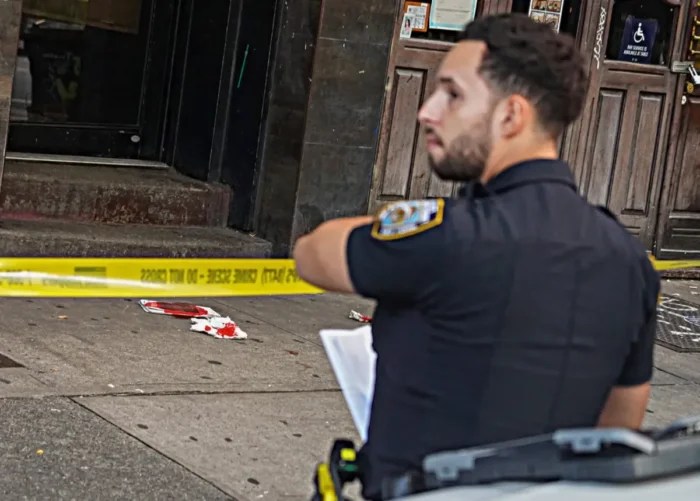The Collector
Marty Himes says thousands flock annually to his Bay Shore home that he has turned into an eponymous museum to Long Island auto racing, and he expects hundreds more for his annual racing reunion. Then he stops to reflect on his need for speed. “I get asked all the time: ‘When was the first race?’” says the 74-year-old historian. “My answer to that is: ‘When they built the second car.’” Sitting in his garage filled with racing helmets, uniforms, flags, signs, photos—even Corn Flakes with Richard Petty on the box from 1993—Himes says he dedicated his life to preserving local speedway history when the tracks began closing, leaving only Riverhead Raceway. “More than likely you’ll never see another racetrack on Long Island again,” he says, voicing the common complaint about a lack of a drag strip. He recalls one of his sons being born while he was racing his ‘56 Ford in Freeport. How he used a blow torch to liberate the sign for Islip Speedway. He lists the national racing champions who came to race here, including Petty and other famous names. “We didn’t make a lot of money, but we didn’t spend a lot of money, either.”
The Cruiser
Chatting up countless folks drawn to his chrome-skull-adorned black 1955 Chevrolet Bel Air parked in the Bellmore train station lot, Joe Congema, an organizer of the nearly 700-member South Side Boys classic car club that founded the Friday night car show here, could be mistaken for mayor of this rockabilly downtown. Except the 69-year-old retired trucker is from East Meadow. And his club’s motto is: “The rules are there are no rules.” Plus mayors don’t usually have hot rods covered in skulls with a trunk mural of the 1973 George Lucas movie American Graffiti. His custom license plate is Falfa, the name of Harrison Ford’s character, whose car explodes in a racing crash. “You get to meet some fascinating people. It brings all different types of people together,” he says, noting that cruise night entry fees often fund charities. But, on a recent August evening, he was all business, selling to his fellow grease monkeys club shirts from his trunk. He wants $35,000 for his hot rod—the same make and model as the first car he bought for $500 as a teenager. Once it’s sold, he has a Model A Ford at home to show off. Looking to fall, he says: “If it’s warm, we’ll be here.”
The Rebuilder
Even if he won the lottery, Bill Carberry, owner of Long Island Classic Car Restoration in Farmingdale, says he’d still spend most of his time under the hood of classics like his green ‘59 Ford Galaxy—although they’d be his cars, not his customers’. “It’s almost a dying profession, working on these old cars,” he says, blaming computerized newer models and younger generations being less interested in learning mechanics. Longer-lasting newer cars are the reason his shop, which specializes in radiator repairs, moved into classic restoration. “It’s taken off really good,” he says. “I park a couple classic cars out there and it’s like a billboard.” Of course, it’s not all work and no play for the man whose career is in his surname. He drag races his ride in Englishtown, N.J., too. “I’d much rather have fun with the car than worry about it getting a nick or a scratch,” he says. “That’s what it’s all about: Rolling up to the light, people checking it out, giving you a thumbs-up.”
The Racer
Speeding around the quarter-mile oval at Riverhead Raceway in his stripped-down ‘77 two-door Chevrolet Caprice Aero Coup last year, Thomas “Smokey” Roberts recalls deciding to crash into the wrecked car in front of him instead of the cement wall. “The car will move, the wall won’t,” he says, remembering the “Boom!” out loud. “When you hit it, it’s like you’re on ice; you don’t know where you’re gonna end up.” The 53-year-old Central Islip auto-auction company worker decided a decade ago to start racing, itching a scratch he got after working in a pit crew. He now ranks in the top 10 in the Enduro Division. “If you wanna race on a very low budget, it’s the best class to get into,” he says. “The first time I went out I was like, ‘Oh my God, this is fun!’ It’s a trip, a total adrenaline rush to get out there on the track and race. Even in my class, where the cars maybe top out at 80 miles per hour.” Most races he walks away from without crashing, but things still get up-close and personal out there while channeling his inner Ricky Bobby. “Rubbin’ is racing, especially at Riverhead, because it’s so small,” he says. “You see an opening, you have to go for it, even if you rub someone.”



